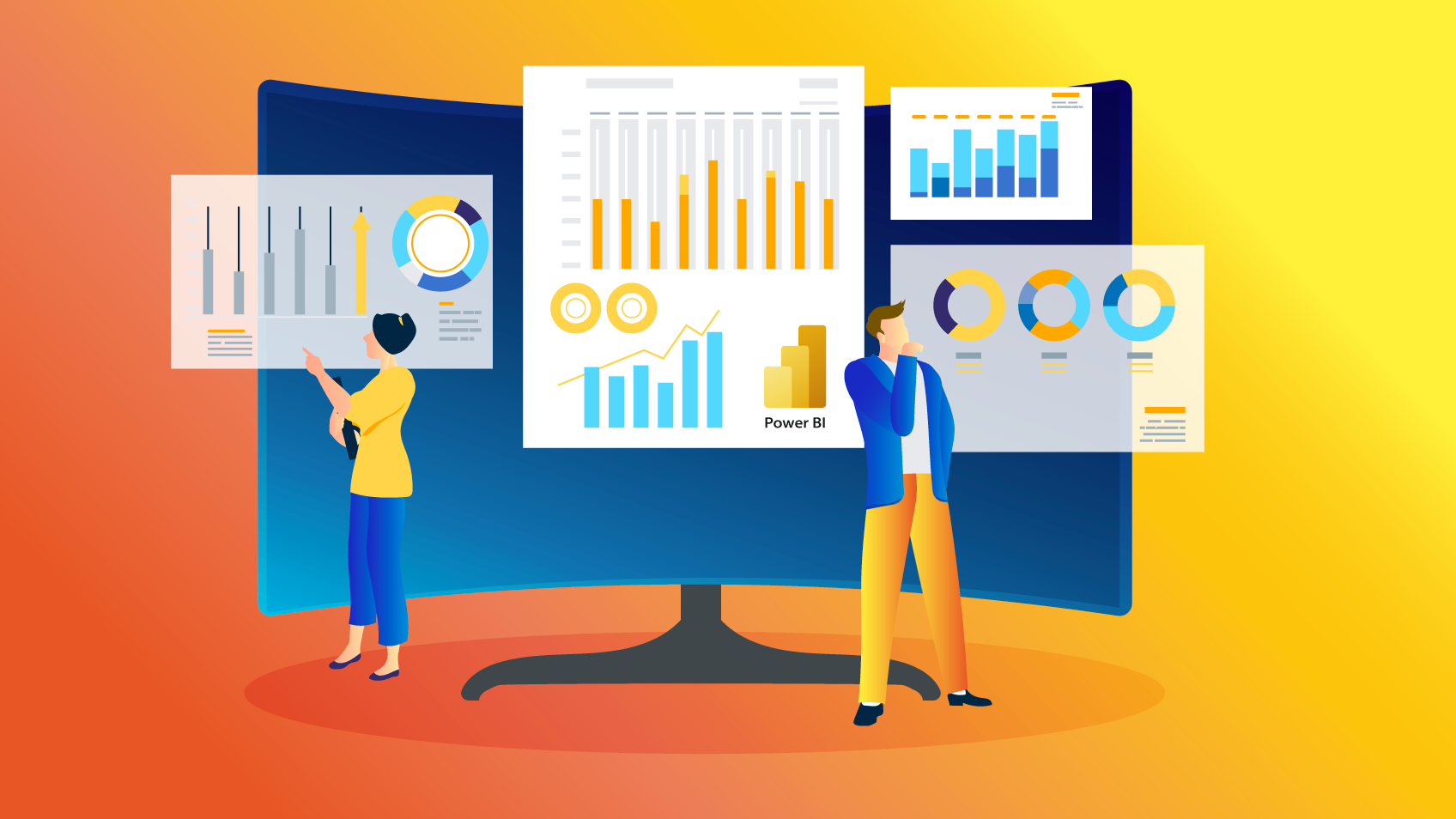In today’s business environment data is a crucial asset that can make or break an organization. Power BI and Microsoft Fabric are powerful tools that companies utilize to unlock the power of data. These platforms are the foundation of business intelligence and when they are integrated with Azure Data Factory, they can be a force that is unstoppable in data analytics and decision-making.

Power BI: Your Business Intelligence Companion
Power BI, a product from Microsoft, is a complete business intelligence tool that is designed to aid organizations in analyzing and share the insights they gain from their data. Power BI lets users create interactive dashboards and reports, transforming raw data into actionable information.
Whether you’re a small startup or a large enterprise, Power BI adapts to your needs. It integrates seamlessly with various sources of data which makes it much easier to merge data from several systems and databases. With its easy drag-and-drop interface, even non-technical users can quickly create meaningful reports and analyses.
Power BI supports real-time processing of data to ensure that you are always armed with the most current data. It provides a variety of graphs and visualizations that allow you to represent data in a palatable and compelling way. The possibility of sharing and collaboration reports with colleagues boosts decision-making and creates a culture of data-driven decision-making in your workplace.
Microsoft Fabric: Weaving Data Excellence
Microsoft Fabric is the fundamental framework that connects and orchestrates data across various Microsoft services. The fabric creates a unified entity that can be utilized by businesses.
Microsoft Fabric helps businesses maintain data integrity and consistency while they deal with increasing the volume of data. It works with a variety of services, ranging from Azure Data Lake Storage and Azure SQL Data Warehouse to Power BI and more. This interconnectedness ensures that data flows seamlessly and that insight can be drawn from diverse sources.
Microsoft Fabric excels in data transformation. You can use it to wrangle data, cleanse and prepare it for analysis, and also ensure that it conforms to the company’s policies on data governance. Microsoft Fabric is an infrastructure that will ensure the accuracy of your data and is reliable for analysis.
Azure Data Factory – The Gateway to Data Transformation
Azure Data Factory is another important component in the current business intelligence market. The cloud-based service lets you to manage and schedule data-driven processes. By orchestrating data movement and transform data, Azure Data Factory paves the way to gain valuable data insights.
One of the key advantages of Azure Data Factory is its ability to connecting to different data sources. It doesn’t matter whether your data is stored in the cloud or in your premises, you can integrate it seamlessly to create a full view of your data ecosystem. The platform can handle batches of processing, real-time streaming of data and big-data analytics. This makes it suitable for many scenarios.
Azure Data Factory provides a visual interface that makes it easier to manage the process of creating data pipes. Even if you are not a programer, it’s simple to create, schedule and monitor data pipelines. This lets users be in charge of data integration as well as self-service data prep.
Power BI with Microsoft Fabric, Azure Data Factory, and Power BI
When Power BI, Microsoft Fabric, and Azure Data Factory come together, they create a dynamic trio that can revolutionize your data analytics efforts. How do they work together?
1. Data Integration Azure Data Factory can connect to various data sources to ensure your data is accessible. This integration tool is integrated into Microsoft Fabric, which orchestrates data across various services. It makes sure that your data is well-organized, clean and is ready to be analysed in Power BI.
2. Data Transformation: Microsoft Fabric is a crucial component of data transform. It allows you to transform your data to meet your preferences. The fabric is a powerful instrument to transform data as well as data cleansing and processing.
3. Power BI is able to be a part of your data after it has been compiled and refined. Power BI lets you develop visually appealing reports as well as dashboards that make difficult data accessible. You can share these information with your team, fostering data-driven decision-making.
4. Scalability: Azure Data Factory is adaptable to handle growing data volumes. Power BI combined with Microsoft Fabric offers stable data as your company grows.
5. Real-time insights: With real-time data processing capabilities, Power BI and Azure Data Factory give you the most current information that can be critical for making quick decisions.
Also, you can read our conclusion.
Business intelligence is evolving rapidly and businesses must tap into data’s power to remain competitive. Power BI, Microsoft Fabric and Azure Data Factory are a powerful trio that will assist you in taking your company intelligence to new heights. If you’re looking to build stunning visualizations, ensure that your data is consistent, or speed up processes for data, this trio includes everything you need. Let your data shine with the help of business intelligence.